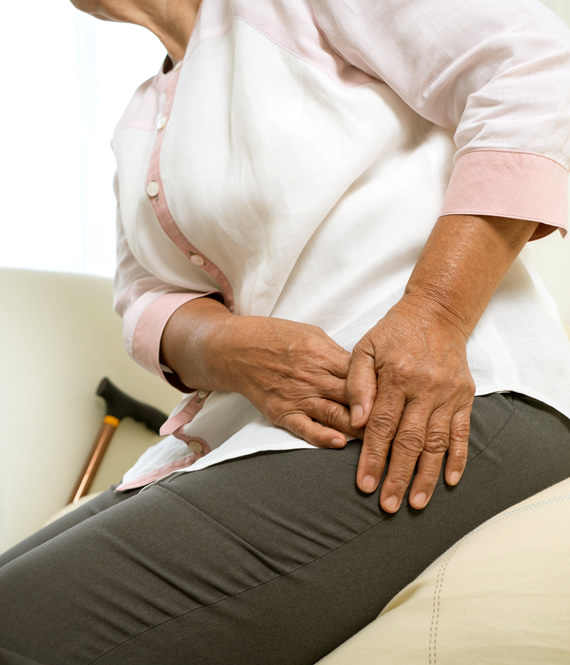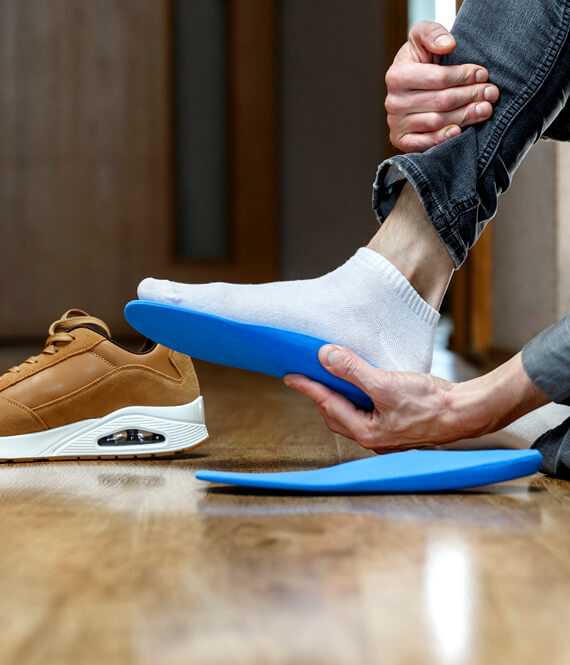
24 Cutting-Edge Advances in Hip Replacement Technology
We recommend helpful products in our articles. Read our full disclosure here. The content on this website is not intended to be a substitute for professional advice, diagnosis, or treatment.
In orthopedics, the innovation surrounding hip replacement surgery stands as a testament to the remarkable strides in medical technology and patient care.
As one of the most successful and life-enhancing surgical procedures available, hip replacements have revolutionized the way medical professionals address mobility issues, offering patients a new lease on life.
This article explores cutting-edge advancements that have shaped the landscape of hip replacement surgery, exploring the synergy of materials science, surgical techniques, and patient-centric care models.
The Importance Of Hip Replacements In Modern Medicine
The importance of hip replacements in modern medicine cannot be overstated, as they represent one of the most significant advancements in surgical history, profoundly impacting the lives of those suffering from hip pain, disability, and decreased quality of life.
As a cornerstone of orthopedic surgery, hip replacements have evolved to address a range of conditions, from osteoarthritis and traumatic injuries to congenital deformities and other degenerative diseases.
Procedures such as robotic orthopedic surgery have become a pivotal solution for restoring mobility, alleviating pain, and improving the overall well-being of millions globally.
Understanding Hip Joint Functionality
Understanding the functionality of the hip joint is crucial to appreciate how hip replacements can restore mobility and improve the quality of life for individuals with hip joint disorders.
Basic Structure And Function
The hip is a ball-and-socket joint, which means it allows for movement in multiple directions.
The ball is the femoral head at the top of the femur (thigh bone), and the socket is the acetabulum, a concave portion of the pelvis.
This configuration enables the hip joint to support complex movements necessary for daily activities, such as walking, running, bending, and twisting.
Muscular Support
The functionality of the hip joint is supported by a complex network of muscles and tendons that enable movement and provide stability.
Major muscle groups involved include:
Gluteal Muscles
These muscles, located in the buttocks, are crucial for hip extension, abduction (movement away from the body’s midline), and rotation.
They play a key role in maintaining an upright posture.
Iliopsoas
This group includes the psoas major and iliacus muscles, which are the primary flexors of the hip, important for lifting the thigh towards the torso.
Adductors
Located in the inner thigh, these muscles are responsible for pulling the leg back toward the midline of the body.
Quadriceps And Hamstrings
Though primarily associated with knee movement, these muscle groups also play significant roles in hip function.
The quadriceps assist with hip extension, while the hamstrings support hip extension and flexion.
Range Of Motion And Stability
The hip joint’s design allows for an extensive range of motion.
Flexion and extension refer to moving the leg forward and backward, respectively.
Abduction and adduction move the leg away from or towards the body’s midline.
External (lateral) and internal (medial) rotation movements occur around the femur’s longitudinal axis.
Despite this mobility, the hip joint is remarkably stable, thanks to the deep socket of the acetabulum, the strong ligaments surrounding the joint, and the muscular support.
This stability is crucial for bearing the body’s weight, especially during dynamic activities like running or jumping.
Common Conditions Leading To Hip Replacements
Several conditions can lead to the deterioration of the hip joint, necessitating hip replacement surgery.
These conditions primarily involve damage to the articular cartilage and changes in the bone, often resulting in pain, stiffness, and reduced mobility.
Osteoarthritis
Osteoarthritis stands as the primary cause prompting hip replacement procedures, characterized by a degenerative joint condition that results in the breakdown of articular cartilage.
This degradation of cartilage leads to direct bone-on-bone contact within the joint, causing discomfort and limited mobility.
Rheumatoid Arthritis
This autoimmune disorder triggers inflammation of the synovial lining, resulting in joint pain and the degradation of both cartilage and bone within the affected area.
Post-Traumatic Arthritis
Arthritis that develops after an injury to the hip, such as fractures or dislocations, can lead to abnormalities in the joint surface and eventual degeneration.
Avascular Necrosis (Osteonecrosis)
This condition occurs when blood flow to the femoral head is disrupted, causing the bone tissue to die and potentially leading to joint collapse.
Hip Dysplasia
A condition where the acetabulum is abnormally shallow, making the hip joint more susceptible to dislocation and arthritis.
Bone Tumors
Tumors in the hip joint can lead to destruction of the joint surface.
These conditions share a common endpoint: the deterioration of the hip joint’s functionality, leading to significant pain and disability.
Hip replacement surgery becomes a viable option when conservative treatments fail to relieve symptoms, aiming to restore mobility and improve the quality of life.
Technological Advancements In Hip Replacements
The field of hip replacement surgery has witnessed significant technological advancements over the years, significantly improving outcomes for patients.
These innovations span the spectrum from the materials and design of implants to surgical techniques and postoperative care.
Evolution Of Implant Materials
Metal Alloys
Early hip replacements utilized stainless steel, but modern implants are commonly made from robust and biocompatible metal alloys such as cobalt-chromium and titanium.
These materials offer excellent durability and a lower risk of wear.
Polyethylene
Advances in polyethylene, used for the artificial socket, have significantly reduced wear rates.
Highly cross-linked polyethylene, treated with radiation to improve its wear characteristics, has become standard due to its longevity.
Ceramics
Ceramic components are known for their exceptional hardness and smoothness, leading to very low wear rates.
Ceramic-on-ceramic and ceramic-on-polyethylene bearings are popular options for younger, more active patients due to their longevity.
Design Innovations For Durability And Performance
Modular Designs
Modern implants feature modular designs, allowing for a customized fit for each patient.
This adaptability improves the implant’s alignment and stability, reducing the risk of dislocation and increasing its lifespan.
Anatomical Customization
Advances in imaging and manufacturing technologies, such as 3D printing, have enabled the production of implants tailored to the patient’s anatomy.
This customization enhances the natural feel and function of the joint post-surgery.
Surface Coatings
Implants are now often coated with materials that promote bone ingrowth, such as hydroxyapatite.
This biological fixation eliminates the need for bone cement in some cases, potentially increasing the longevity of the implant.
Surgical Technique Advancements
Minimally Invasive Surgery (MIS)
Smaller Incisions
MIS techniques for hip replacement involve making smaller incisions, reducing muscle and tissue disruption.
This approach can lead to faster recovery times, less postoperative pain, and smaller scars.
Enhanced Recovery Protocols
These protocols are designed to minimize hospital stays and facilitate a quicker return to normal activities.
They include preoperative patient education, optimized pain management, and early mobilization.
Robotic Orthopedic Surgery
Precision And Customization
Robotic systems in hip replacement surgery, such as the MAKO or da Vinci systems, provide surgeons with enhanced precision and control.
These systems offer real-time imaging and mapping, allowing for more accurate implant positioning and alignment compared to traditional techniques.
Real-Time Adjustments
During surgery, surgeons can make real-time adjustments to ensure the optimal alignment and fit of the implant, reducing the risk of complications.
Pain Management And Recovery
Advanced Anesthesia Techniques
Regional Anesthesia
Techniques such as spinal and epidural anesthesia, as well as nerve blocks, provide effective pain control while minimizing the side effects associated with general anesthesia.
Multimodal Pain Management
A combination of medications (NSAIDs, opioids, local anesthetics) is used to manage pain effectively, reducing opioid consumption and associated side effects.
Postoperative Pain Management Strategies
Continuous Nerve Blocks
These can provide targeted pain relief in the immediate postoperative period.
Pain Management Plans
Tailored to individual patient needs, these plans aim to minimize discomfort while promoting early mobility.
Rehabilitation And Physical Therapy Advances
Prehabilitation
This involves physical therapy before surgery to strengthen the muscles around the hip, leading to better outcomes.
Customized Rehabilitation Programs
Post-surgery, patients follow personalized rehabilitation programs designed to restore mobility and strength more effectively, often incorporating advanced technologies such as virtual reality and wearable devices for monitoring progress.
Technological advancements in materials, design, surgical techniques, and postoperative care have transformed hip replacement surgery into a highly effective, safe, and patient-friendly procedure.
These innovations continue to evolve, promising even better outcomes for patients in the future.
Patient-Centric Innovations In Hip Replacements
The shift towards patient-centric care in orthopedics has led to significant innovations aimed at enhancing outcomes and personalizing the treatment experience.
These advancements not only improve surgical precision and recovery rates but also tailor the surgical process to meet the unique needs of each patient.
3D Printing in Custom Implants
Tailored Fit
3D printing technology has revolutionized the manufacturing of hip implants by enabling the creation of components that precisely fit the patient’s anatomy.
This customization can lead to better joint stability, reduced wear, and a more natural range of motion.
Rapid Prototyping
The ability to quickly produce models of a patient’s hip joint before surgery allows surgeons to plan and even practice the procedure, reducing the risk of unexpected challenges during the operation.
Personalized Surgical Planning
Preoperative Imaging
Advanced imaging techniques, such as magnetic resonance imaging (MRI) and computed tomography (CT) scans, are used to create detailed 3D models of the patient’s hip joint.
These models help in planning the surgical approach, selecting the optimal implant size and position, and predicting potential challenges.
Computer Simulation
Surgeons can simulate the surgical procedure using the patient’s specific anatomical data.
This process allows for adjustments in the surgical plan to ensure the best possible outcome, enhancing the fit and function of the implant.
Outcome Optimization
Real-time Monitoring And Feedback Systems
Intraoperative Sensors
During surgery, sensors can provide real-time feedback on the placement and alignment of the hip implant, allowing for immediate adjustments.
This precision helps in achieving optimal biomechanical alignment, reducing the risk of postoperative complications.
Postoperative Monitoring
Wearable devices and implanted sensors can monitor the patient’s activity levels, range of motion, and other critical parameters during recovery.
This data enables personalized rehabilitation plans and early detection of potential issues.
Predictive Analytics In Patient Recovery
Data-Driven Insights
By collecting and analyzing data from a wide range of sources, including preoperative health metrics, intraoperative details, and postoperative recovery patterns, predictive analytics can identify trends and predict outcomes for individual patients.
Customized Rehabilitation
Insights derived from predictive analytics allow healthcare providers to tailor rehabilitation programs to the patient’s specific needs, optimizing recovery times and improving overall outcomes.
Predictive models can also identify patients at higher risk of complications or slower recovery, enabling proactive interventions.
Together, these advances represent a transformative shift towards more customized, patient-focused orthopedic care.
Regulatory And Ethical Considerations
Approval Process For New Medical Devices
The approval process for new medical devices, including hip implants and associated technologies, is stringent and comprehensive, ensuring that new products are safe and effective before they reach the market.
Regulatory agencies such as the U.S.
Food and Drug Administration (FDA) and the European Medicines Agency (EMA) have established detailed protocols for clinical trials, quality assurance, and risk assessment.
Manufacturers must demonstrate through rigorous testing that their products meet the high standards set for biocompatibility, durability, and performance.
This process can be lengthy and costly but is crucial in protecting patient health and safety.
Ethical Considerations In Orthopedic Innovations
Ethical considerations in orthopedic innovations revolve around ensuring equitable access to new technologies, managing conflicts of interest, and maintaining patient autonomy.
Innovations should ideally benefit a broad spectrum of patients, but the high costs associated with developing and implementing new technologies can limit access.
Healthcare professionals and researchers must navigate these challenges while prioritizing patient welfare and informed consent, ensuring patients are fully aware of their treatment options and the potential risks and benefits of new procedures.
Data Security And Patient Privacy In Digital Health Solutions
The increasing integration of digital health solutions in orthopedics, such as telehealth and remote monitoring, raises important concerns about data security and patient privacy.
Protecting sensitive health information requires robust cybersecurity measures and adherence to regulations such as the Health Insurance Portability and Accountability Act (HIPAA) in the U.S. and the General Data Protection Regulation (GDPR) in the EU.
Ensuring patient trust is paramount, necessitating transparent data practices and secure, patient-centered systems.
Global Trends And Future Directions
Geographic Variations In Hip Replacement Technologies
Geographic variations in the availability and adoption of hip replacement technologies reflect disparities in healthcare infrastructure, regulatory environments, and economic factors.
While developed countries often lead in the adoption of cutting-edge technologies, emerging economies may face challenges in accessing these innovations.
Efforts to increase global access to advanced orthopedic care involve international collaborations, technology transfer agreements, and initiatives to reduce costs.
The Impact Of Demographic Changes On Orthopedic Needs
The world’s aging population has a profound impact on the demand for orthopedic care, particularly hip replacements.
Older adults are at a higher risk of conditions such as osteoarthritis, leading to increased need for joint replacement surgeries.
This demographic shift requires not only advancements in surgical techniques and implant technologies but also improvements in healthcare systems to support the growing demand for orthopedic services.
Emerging Research And Potential Breakthroughs
Emerging research in orthopedics promises to bring about new breakthroughs in hip replacement surgery and rehabilitation.
Innovations such as gene therapy for cartilage regeneration, advanced biomaterials for longer-lasting implants, and AI-driven predictive analytics for personalized treatment plans are on the horizon.
Continued investment in research and development is essential for realizing these potential breakthroughs, which could further improve outcomes for patients undergoing hip replacement surgery.
The field of hip replacements is at an exciting juncture, with technological advancements, regulatory and ethical considerations, and global trends shaping its future.
As research and technology continue to evolve, the potential to enhance the lives of those suffering from hip-related conditions has never been greater.
Conclusion
The evolution of hip replacement surgery is a testament to the relentless pursuit of excellence in medical science, aiming to alleviate suffering and improve the human condition.
It represents a harmonious blend of innovation, compassion, and dedication to patient care, embodying the best of what modern medicine has to offer.
"We love to research problems, examine studies, analyze solutions, and share with you ideas that make life healthier. You can learn about us and our editorial standards here. Have suggestions or feedback to share? Send us a message!."













Leave a Comment